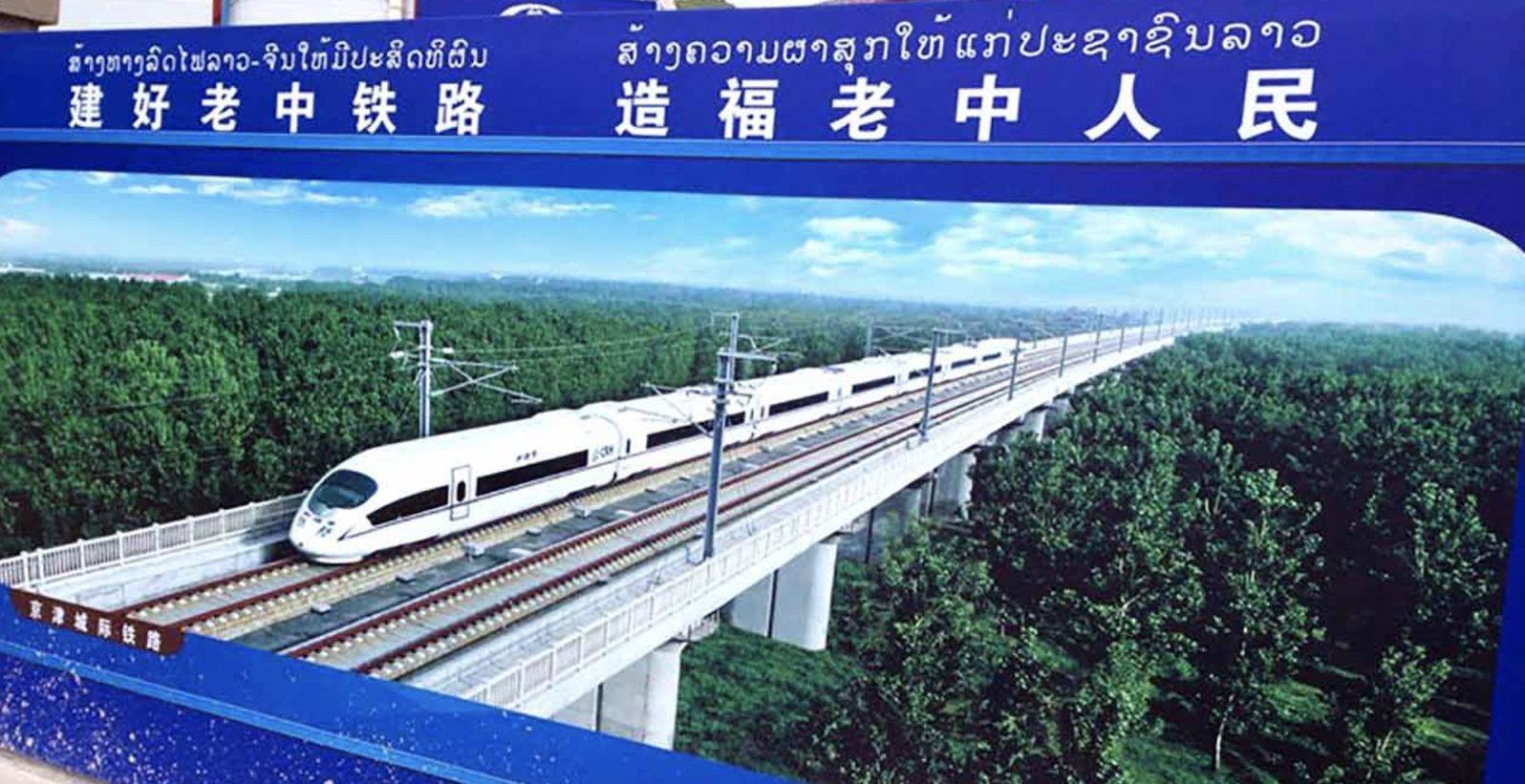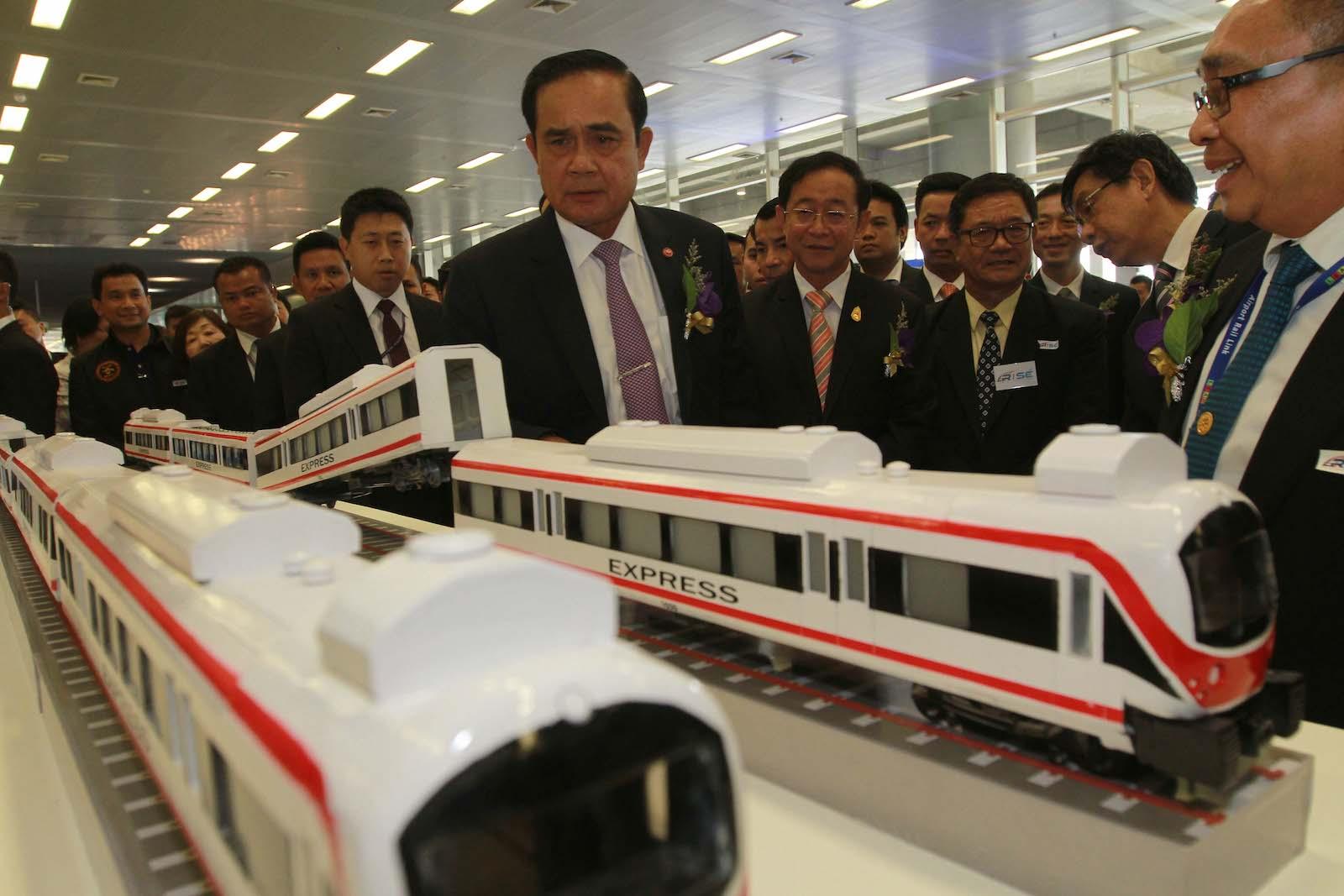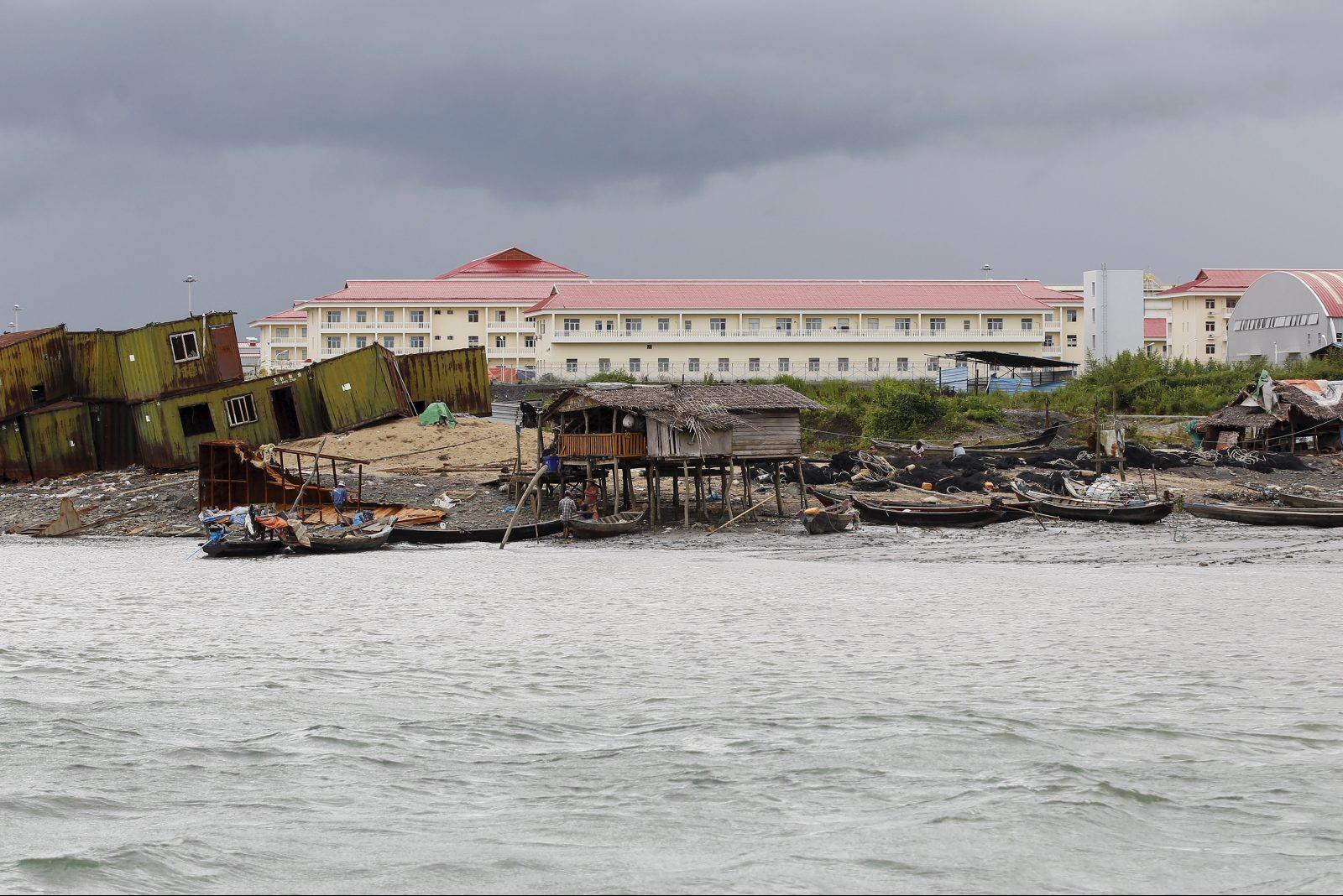(MENAFN- Asia Times) Laos will never be the same again on December 2, the day the first high-speed train on the Belt and Road Initiative-built railroad is scheduled to roll into the capital Vientiane arriving from the southern Chinese province of Yunnan.
Running for 414 kilometers from the border with China, the new line will transform Laos from a land-locked to land-linked country, as the Chinese state news agency Xinhua has trumpeted in several dispatches on the US$6 billion project.
According to Xinhua, Laos' underdeveloped Economy will blossom as the new modern train speeds in Chinese tourists and businesspeople, facilitates faster and greater trade, and thus enhances Laos' connectivity and post-pandemic economic recovery.
Beijing is seeking to showcase the China-Lao train as a Belt and Road Initiative success story, one that encourages other Southeast Asian states to more firmly embrace the $1 trillion infrastructure-building scheme that has stalled on various fronts in the neighboring, resource-rich region.
That includes stop-and-go progress on a similar rail line in Thailand and a port project in Myanmar, both of which are key to the BRI's vision of a better-connected regional economic sphere with China at its powerful center. That trade-geared vision is all the more important to China's economic security as tensions continue to rise with the US and its allies in contested sea lanes.
There is no doubt that the China-Laos railroad is a remarkable feat of engineering. The deal between China and Laos was first struck in 2015 and work began in December 2016.
Since then, Chinese engineers have built 75 tunnels, 165 bridges and 20 stations through some of the most mountainous terrain in all of Southeast Asia, according to a Chinese general manager of the Lao-China Railway Company (LCRC), the joint venture that will operate the railroad.
The only railroad in Laos before the BRI-funded project was launched was a 3.5-kilometer Thai-built meter-track built in 2009 across the Thai-Lao Friendship Bridge to Dongphosy village, 20 kilometers east of Vientiane, and a seven-kilometer, 600-millimeter narrow gauge line that was built in the late 19th century when Laos was a French colonial possession.
The latter bypassed some waterfalls on the Mekong in the south, but was closed in the 1940s. Today, only some rusted locomotives remain on Don Khon island in the Mekong.

A promotional poster for the 414-kilometer Laos-China railway project that promises to transform Laos from landlocked to land-linked. Photo: Facebook
The new, 21st-century project is only the beginning of a massive infrastructure drive that aims to transform all of mainland Southeast Asia. If all goes to plan, the railroad will continue from Vientiane across a planned new bridge on the Mekong River to Nong Khai in Thailand and then, eventually, all the way down to Singapore.
But there are downsides to the grand plan which has put Laos heavily in debt to China. Around US$3.6 billion of the railway's total $5.97 cost has been financed a loan from the Export-Import Bank of China and the remainder by the LCTC, which is comprised of three Chinese state-owned firms holding 70% and a Lao state-owned enterprise with 30%.
But even the Lao share of the project's expense is covered in part by loans from China. The bills are coming due while Laos' $20 billion economy is weighed down by an estimated $12.6 billion in foreign debt, including US$5.9 billion owed to China for the railroad and other projects.
Fitch Ratings described Laos' external debt repayment profile as“challenging” in an August 9 report with around $422 million due over the remainder of 2021“and an average of $1.16 billion due per annum between 2022 and 2025.”
To fulfill those requirements without having to take out more loans, and then most likely from China, will be more than a“challenge”, the Fitch report said. Concerns are rising that Laos will soon be submerged in debts it can't service and thus will fall victim to what critics of China's lending practices call sovereignty-eroding“debt-traps.”
Unable to make repayments in hard currency, Laos has already turned to repaying loans to China through debt to equity swaps. In September last year, Vientiane ceded majority control of the debt-ridden state utility Électricité du Laos to China Southern Power Grid Co to cover debts owed. Reports noted at the time that means Laos' national power grid is now de facto controlled by a state-owned Chinese company.
That erosion of sovereignty is no doubt ringing alarms in other Southeast Asian nations – not least Thailand – that Beijing is pressing to more fully commit to its BRI.
Thailand already has an extensive railroad network but with one-meter gauge tracks while the China-Lao high-speed trains will roll on a standard 1,435-millimeter. That means that an entirely new railroad would have to be built on the Thai side and beyond. Even Malaysia and Singapore have meter-gauge railroads that would not be suitable for China's high-speed trains.

Thai Prime Minister Prayut Chan-ocha looks at a model train at an industry symposium and exhibition in Bangkok, March 16, 2016. Both of his governments have made scant progress on the Thai-China train. Photo: AFP
Whether China's plans will materialize in the foreseeable future is an open question. Strict Covid-19 travel restrictions in China and much of Southeast Asia have raised new questions about the desirability and feasibility of the BRI's vision of fast and open borders.
Thailand seems more interested in connecting Bangkok with Nakhon Ratchasima in the northeast, Chiang Mai in the north, and to beach resorts like Pattaya and Hua Hin, than being part of some broader Chinese scheme for the entire region. Most of those plans, despite Bangkok's years of repeated assurances to Beijing the plan is on track, remain on the drawing board.
The only visible progress so far is the construction of a new railroad hub at Bang Sue, a northern Bangkok suburb, which will replace the old, downtown Hualampong Central Station. From Bang Sue, new railroads will branch out to different destinations in Thailand. In Malaysia, tentative agreements for the construction of high-speed railroads involving Chinese partners were allowed to lapse in May.
That leaves Myanmar as the only reasonably secure outlet for China to connect its railroad networks with Southeast Asian markets other than little landlocked Laos. That route, dubbed the China-Myanmar Economic Corridor, forms a vital part of the BRI as it would provide the Chinese with direct access to the Bay of Bengal and Indian Ocean ports.
A railroad has been built from China's Yunnan province capital of Kunming to Ruili, a border town opposite Muse in the far north of Myanmar's Shan state.
Another newly-built line, ceremonially opened on August 25, stretches from Sichuan's provincial Chengdu to Lincang in Yunnan, with a road connection to the border at Chinshwehaw in northeastern Shan state.
But ever since those Chinese-side projects were launched more than a decade ago, skeptics have pointed out that widespread insurgencies across the border in Myanmar would make it difficult, if not impossible, to extend those lines through northern Shan state to the central city of Mandalay.
From there a new railroad was planned down to the old capital Yangon and, more importantly, the deep seaport at Kyaukphyu on the Bay of Bengal in Myanmar's western Rakhine state.

Local residents' houses in front of buildings of a Chinese oil pipeline project on Myanmar's Madae island in Kyaukphyu. Photo: Facebook
On October 22, 2018, a Memorandum of Understanding (MoU) for a railroad from the border to Mandalay was signed between the now-ousted Myanmar government and China Railways. Another MoU for the route from Mandalay to Kyaukphyu was signed on January 10 this year.
The China Railway Eryuan Engineering Group has carried out some feasibility studies along the route from the border to Mandalay but little, if any, concrete progress has been made on the ground.
The Covid-19 pandemic is now running rampant in Myanmar, prompting China to close the border. And the insurgencies in northern and northeastern Myanmar have only intensified since the MoUs were signed less than a month before Myanmar's destabilizing February 1 coup.
The railroad to Vientiane could thus be the beginning and end of China's lofty BRI plans for the region, particularly as China starts to turn inward and the economy shows new signs of overleveraged weakness.
In the end, China may not achieve the access to Southeast Asian ports it has so long desired while Laos is stuck with a hefty bill for infrastructure that is of marginal use and questionable commercial viability without wider connections.
MENAFN03102021000159011032ID1102905880